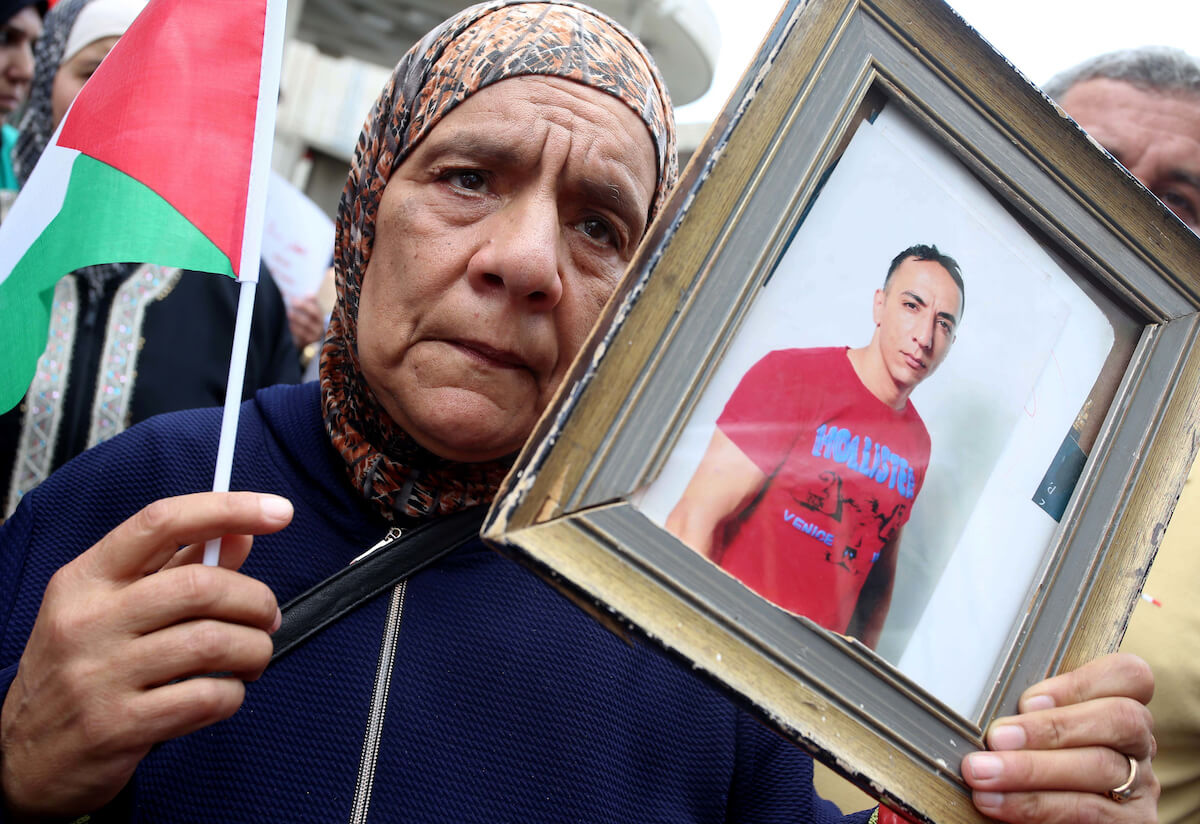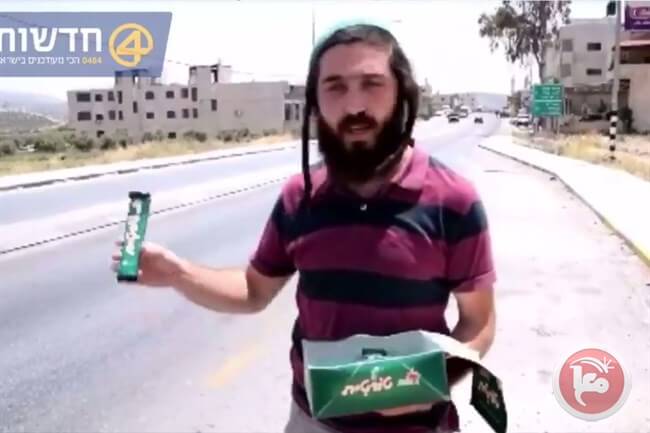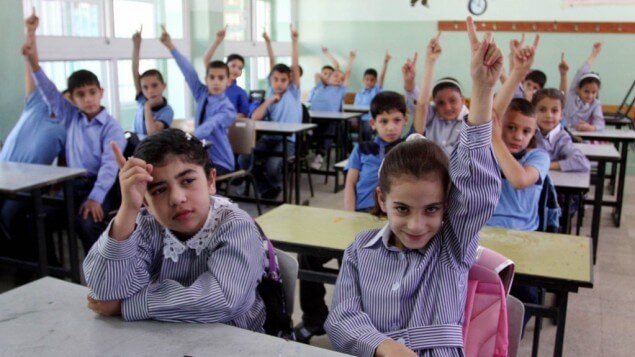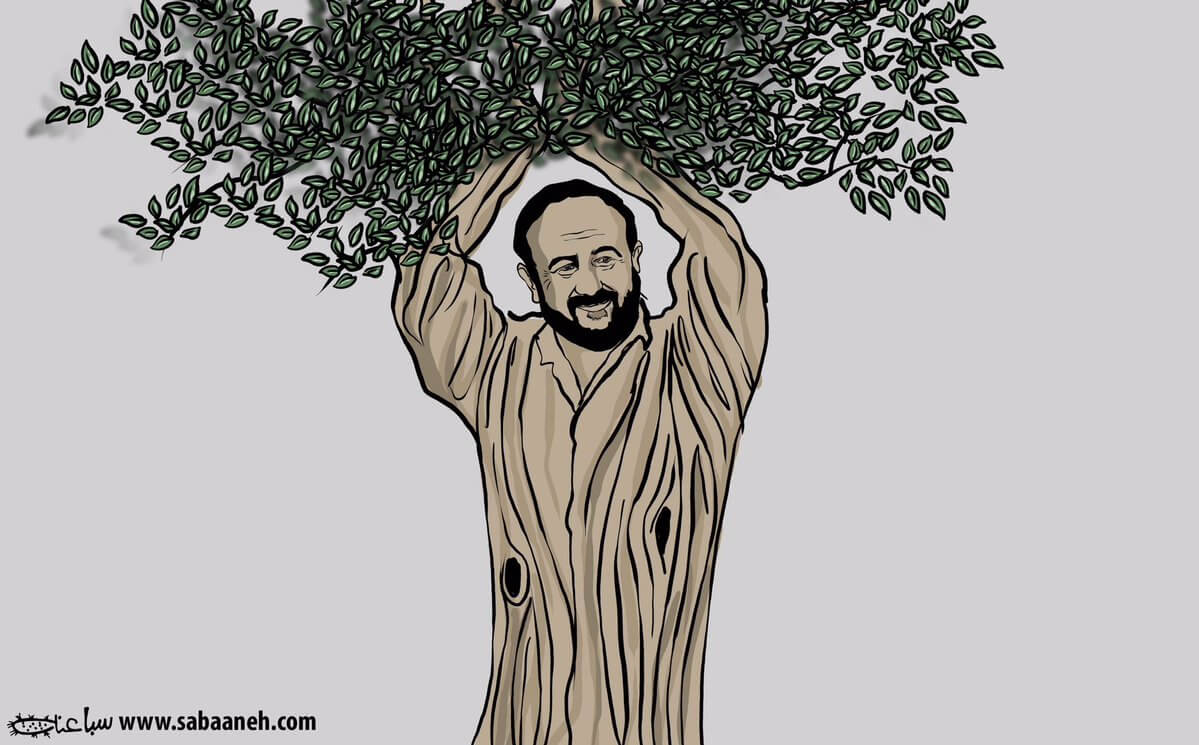“Do our prisoners have to experience martyrdom to achieve the most basic of rights and do we have to be reunited with them once they are corpses instead of welcoming them home alive?!” Read a letter written by mothers of Palestinian prisoners to U.S. President Donald Trump.
Phil Weiss shares a photo essay from when Donald Trump visited Jerusalem and the Old City. Israeli security wrapped sites he was visiting with white sheets ala Christo, to keep anyone from seeing him, or disrupting events. There were armed checkpoints for Jewish Israelis, and a surveillance balloon in the sky.
Michael Merryman-Lotze remembers Israel’s siege on the West Bank city of Ramallah during Operation Defensive Shield: “The night of April 2 was one that I won’t forget. That was the night that the Israeli military took over the Preventative Security Office in Betunia. They surrounded the building with tanks and forced out the Palestinian police inside, arresting many. They searched the prison, releasing criminals and detaining others. They then proceeded to destroy the compound, firing tanks and missiles into the buildings throughout the night.”
Youth Against Settlement’s Issa Amro writes about signs settlers have posted inside of Hebron, “At the front of Shuhada street in the old city of Hebron is a street sign pointing multiple directions: Chabad Cemetery, Old Jewish Cemetery, Ancient Tel Hebron. The words are in Hebrew and English only. The purpose of the sign is not to provide directions but to erase Palestinian identity, and even the Arabic language, from the area. For more than a decade Israeli settlers have been installing these types of signs throughout Hebron. Over the past two years, the installation of these signs has increased exponentially.”
Phil Weiss reports from the streets of Jerusalem on the eve of Donald Trump’s visit there that it is clear Israeli Jews have made their choice — a Jewish state, not a democratic one. They fear the creation of a Palestinian state. Even the left is demoralized, and favors Israeli security over Palestinian rights. Netanyahu has achieved what Trump can only dream of, a broadly unified national politics, on an ethnic basis.
A source with the Palestinian Liberation Organization (PLO) close to the Negotiation Affairs Department vehemently denied allegations made on Saturday, which stated that Palestinian President Mahmoud Abbas was planning on proposing a deal that would give up 6.5 percent of Palestinian lands in negotiations during U.S. President Donald Trump’s upcoming visit on Tuesday.
Ma‘an News reports: “Following a deadly shooting carried out by an Israeli settler near the Huwwara village in the occupied West Bank district of Nablus, an Israeli settler distributed candy to passing Israeli vehicles south of Nablus on Thursday in celebration of the settler killing a 23-year-old Palestinian earlier in the day. An Israeli settler killed Muataz Hussein Hilal Bani Shamsa and injured Palestinian journalist Majdi Eshtayya after exiting his car and indiscriminately shooting live ammunition on a crowd of Palestinians during clashes that erupted with Israeli forces following a march held in solidarity with a mass Palestinian hunger strike”
Hundreds of activists, organized by a coalition of Palestinian, Israeli and International organizations joined the families of Sarura to rebuild their village and create the “Sumud Freedom Camp.” The camp is located in an Israeli military firing zone on land belonging to the Palestinian village of Sarura, where families were expelled by Israeli forces in the 1990’s. The activists want to show a grassroots counterpoint to the high-level political process and U.S. President Donald Trump’s visit to Israel/Palestine this upcoming week. The event also aims to mark 50 years of the 1967 occupation.
Alice Rothchild is invited to give a talk about Israel/Palestine to a New England private school, then disinvited after the administrators view her PowerPoint presentation. A dismayed Rothchild writes, “The tragedy for me is that first there is this framing that there are ‘two sides’ when there are actually many sides, this being a complicated historical time, and that anyone who says, let’s step back and look at the forces of colonialism, ethnic cleansing, explore the narrative of Palestinians, question the framing and dominant paradigms of the Israeli government, AIPAC, Christian Zionism, this person (who is often me) is immediately perceived as causing conflict or needing to be balanced by the ‘other side’.”
Tamara Nassar writes: “The hunger strike is then the reclamation of the body which has been stolen by Israel and confined to a cell-block; the re-assumption of a subjectivity temporarily abducted by military might; a revival of humanity. The hunger strike may be a peaceful reclamation, but it is not non-violent. The violence is simply subdued, transformed into a perpetual struggle between the prisoner and the prisoner’s body. It is a battle: a form of torture that the prisoner inflicts on themselves in a symbolic, but also literal, redemption of agency. It is indeed the body where the Palestinian prisoner finds freedom within the confines of the cell in the larger context of occupation, retrieving the one thing the occupier may never access: Palestinian dignity.”









